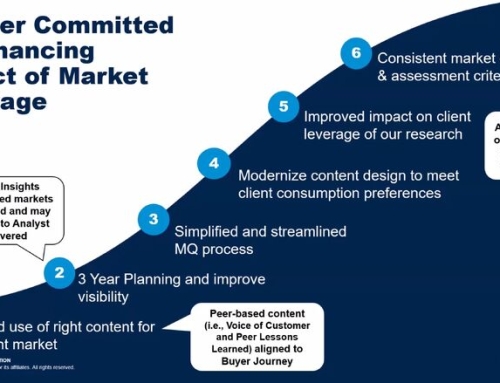Here’s why your first 100 enterprise peer reviews are so critical
There’s been a surge in the success of enterprise peer review sites like Gartner Peer Insights, G2 and TrustRadius. Gartner is close to 400,000 enterprise reviews, TrustRadius has 286,000 and G2 is well on its way to the two-millionth review overall, although not all are around enterprise products, services and solutions.
But the success of these platforms is not only because enterprise technology users are leaving reviews, it’s about the people reading them – and acting on the knowledge shared by their peers.
Of these millions of reviews, vendors are discovering that it’s the first 100 per category that defines their future ranking. Review averages are not set in stone, but a vendor that’s pegged at 4.6/5 after the first 100 reviews will find their future score continues to hover between 4.5 and 4.7.
Review site algorithms calculate scores based on the star ratings provided by reviewers and other factors such as the breadth of geographic coverage and the review age. TrustRadius also has unique scoring for vendors that have taken its pledge to be TRUE – transparent, responsive, unbiased and ethical – in sourcing reviews.
Focus on the longer game
Talk to executives at the leading enterprise review sites and they’ll tell you vendors must focus on the long game, and to stop even trying to cherry-pick reviews. They tend to advise against a campaigns-driven approach to generate reviews in response to a trigger event – like the kick-off for a Gartner Magic Quadrant – or a key competitor suddenly storming the review charts, followed by nothing, as the stop-start approach doesn’t work well.
But that’s still the genesis for most review programs today. An external deadline is a powerful incentive. Trade shows also used to be a great way to drive a reviews pipeline, but vendors replicating this at virtual events see variable success levels: Too many distractions.
For vendors, our advice is to take a more sustainable approach. Don’t sweat your customers. If they are not ready to provide a review, then don’t even ask. And if you don’t know whether or not they’re ready, then they probably are not.
We also advise against the “mass outreach” approach for soliciting reviews in the early phases. This can go badly wrong and drag down your average, which means a rocky road ahead to bring up your average grade score.
Once a product or service has built up some reviews, it’s important to widen the scope – and an easy way of doing this is to add “leave us a review” links on email footers and web pages. That said, we recommend these are placed on customer-facing pages to reduce the number of reviews written by mischief-makers who are not actual customers. (Yes, people with time on their hands do write and submit fake reviews, especially if there’s a $25 gift card on offer.)
Back to the first 100. These are the reviews that set the tone for your product, service or solution.
In launching a reviews program, smart vendors invest time with their customers to talk about the review process. They use the opportunity to talk through features or elements that the customer finds particularly beneficial before asking the customer to start providing feedback.
Vendors taking a strategic approach also think beyond the obvious reasons for requesting reviews. It’s not about “helping us to beat the competition” or “doing us a favor”. Instead, the review ecosystem revolves around shared experiences and collective knowledge to help others in the same role, evaluating the same market, in making more informed buying decisions.
At the same time, vendors benefit from a ton of constructive feedback from enterprise peer reviews. For example, repeated feedback from customers convinced one vendor we are working with on peer review enablement to invest in improving its product documentation. Customer requests for this improvement were not a surprise, but the voice of the customer in high-profile reviews brought this to a tipping point.
Destrier runs enablement programs for vendors looking to start or improve their performance in enterprise peer reviews. If you want to know more, then we’d love to hear from you.






